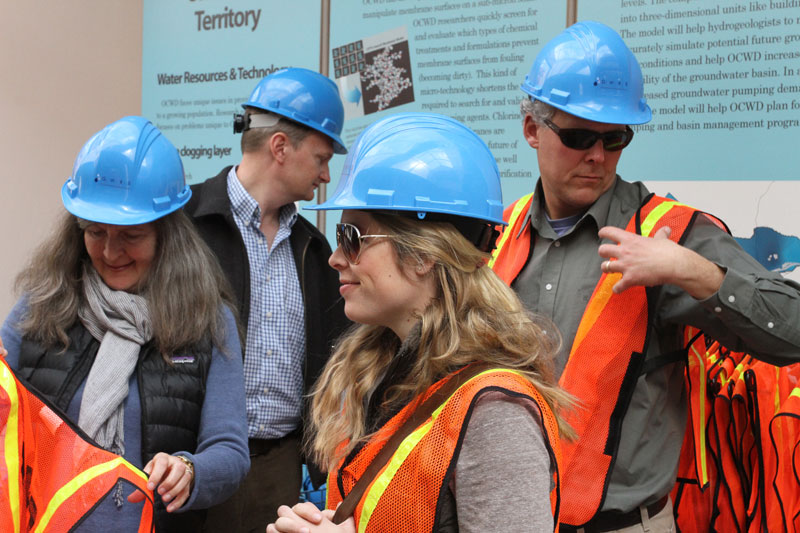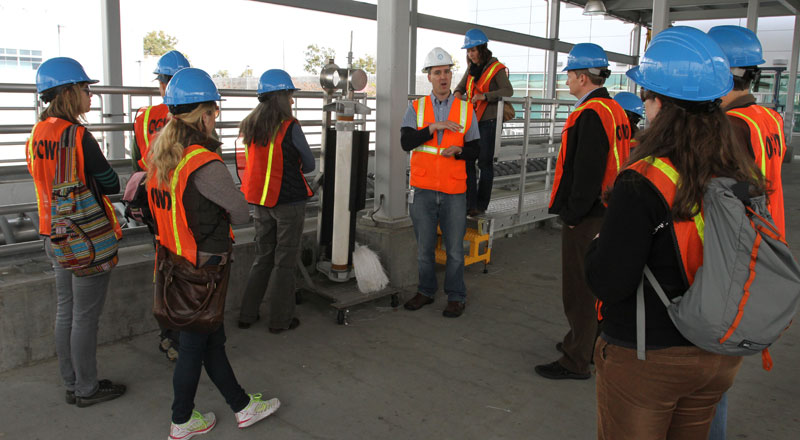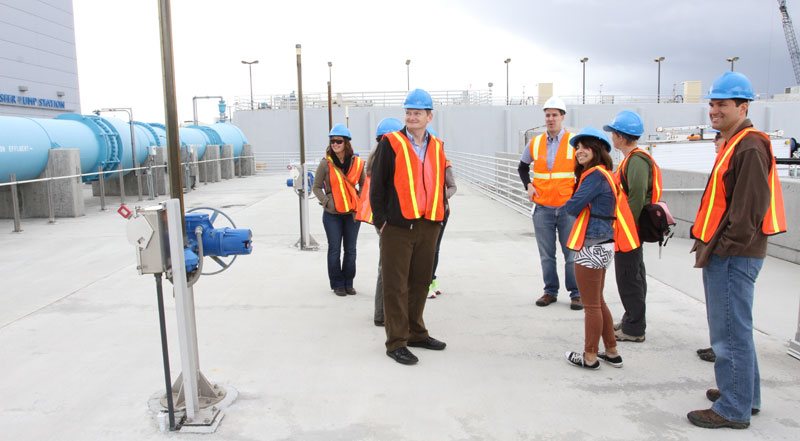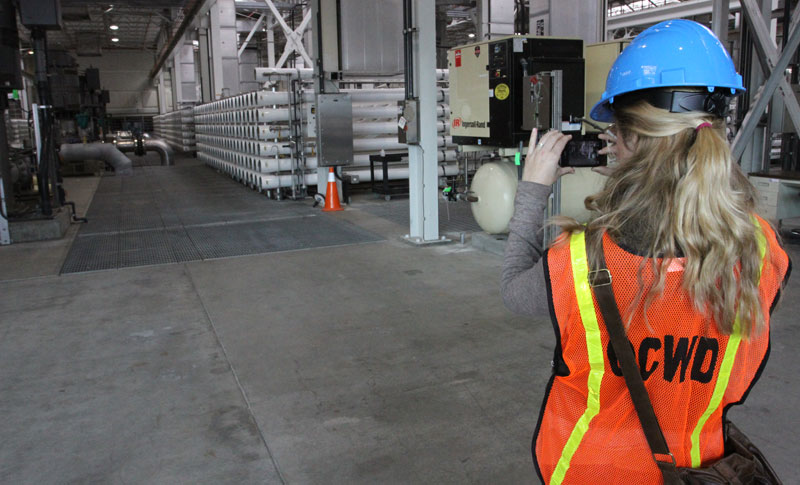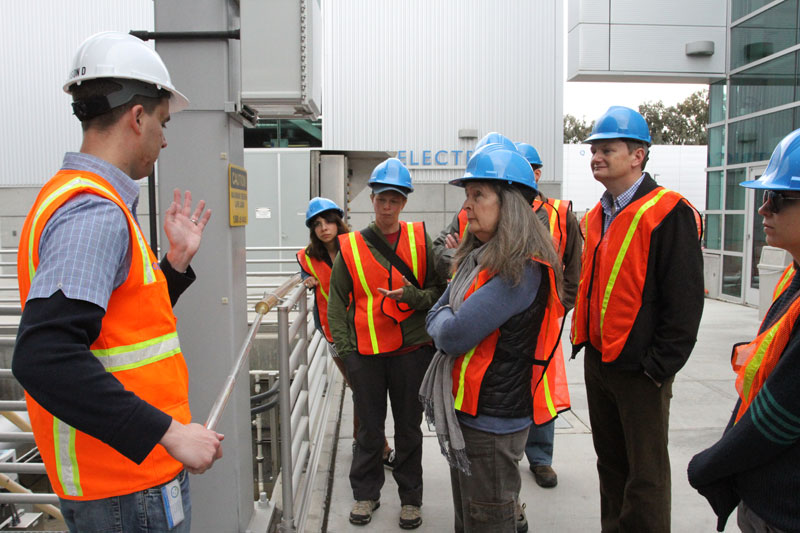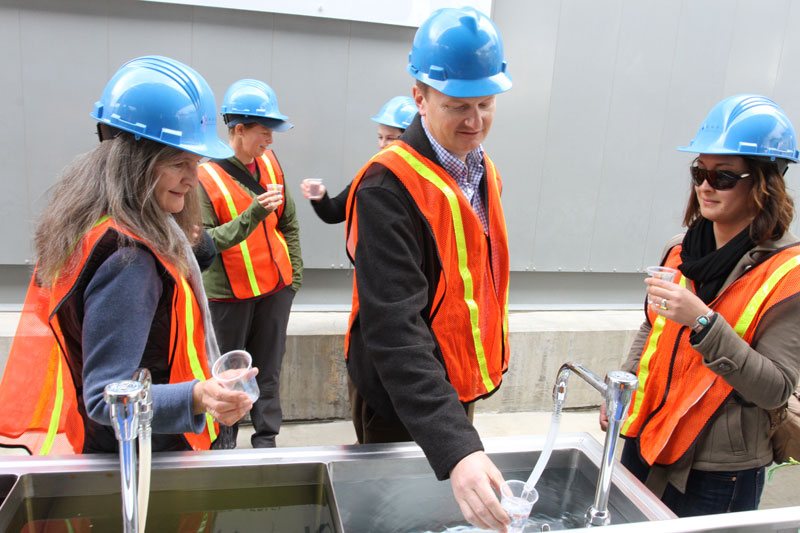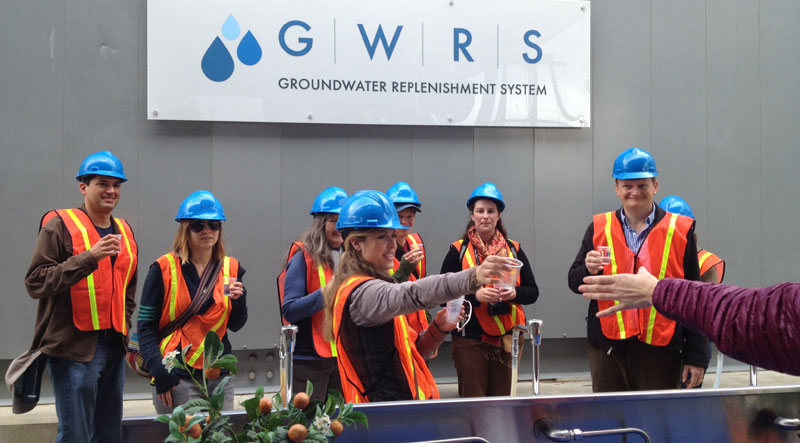
Imagine 70 million gallons of pure water. This is the total amount of water being recycled each day in Orange County, California. Seventy million gallons of water is 215 acre feet of water a day. Production over a full year totals 72,000 acre feet, which in Mono Basin terms, roughly equals the total annual, average flow of Rush, Parker, and Walker creeks. In terms of supply value, this is enough water to sustain the domestic water needs of 600,000 Southern Californians.
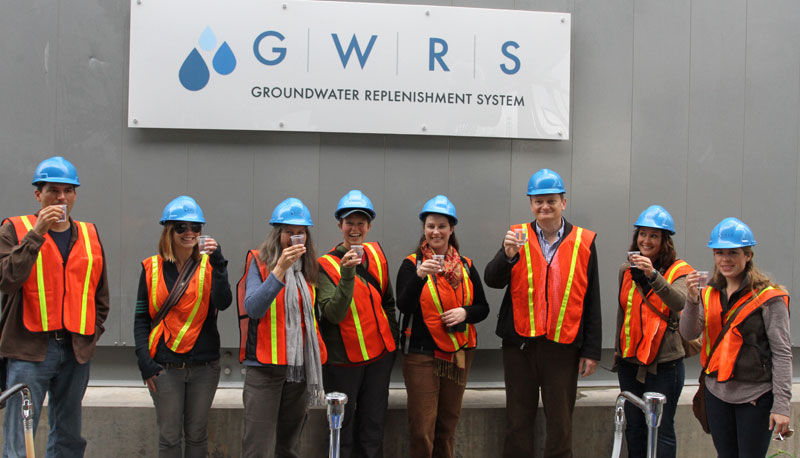
Two weeks ago Mono Lake Committee staff had the opportunity to visit the largest water recycling facility in North America. The Groundwater Replenishment System facility (GWRS) is located in Fountain Valley and is a joint public project by the Orange County Water District (OCWD) and the Orange County Sanitation District (OCSD). The facility has no direct connection to water supplies in the Eastern Sierra nor Los Angeles, but it is an engineering and technological success that takes tertiary-treated sewer water and purifies it. Microfiltration, reverse osmosis, and ultraviolet light with hydrogen peroxide are the three transformative steps.
Can you drink it? Yes. In fact, Committee staff did just that. The water looked and tasted pure. Does the water go directly into the domestic water supply? No. The water is pumped in two different directions and ultimately enters the supply indirectly. Purified water is sent to injection wells where it acts as a seawater intrusion barrier, keeping the ocean from mixing with fresh groundwater supplies beneath Orange County. GWRS water is also pumped to gravel-lined recharge basins in Anaheim where it percolates down to replenish groundwater supplies that later become a part Orange County’s drinking water.
The GWRS is not new. It’s been online since 2008. What is new is that the facility is expanding to produce 100 million gallons a day.
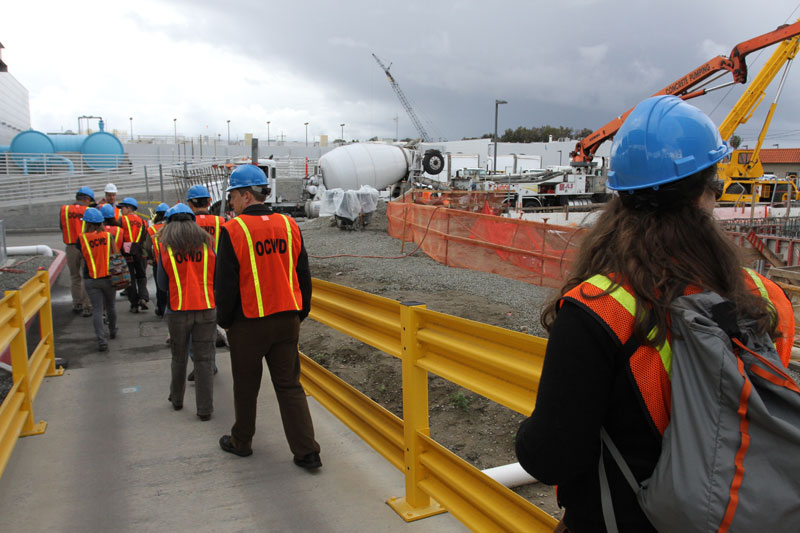
How does this connect with Los Angeles and the Eastern Sierra? The Los Angeles Department of Water & Power (DWP) is preparing for the future. Recycled water supply is a part of those preparations, and the GWRS in Orange County is a model of success. DWP has been recycling water for years, and decades ago, the Committee helped secure the funding to develop that capacity. Unfortunately, only 1% of LA’s water supply comes from recycled water. Fortunately, improvements are underway with more planned for the future (look for that post tomorrow).
If you have any doubts about the potential of recycled water to further diversify and expand our urban water supplies, you need only take a tour of OCWD’s facility. It will make you wonder why we have waited so long to embrace recycled water as a viable solution.
